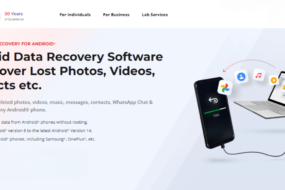In today’s digital era, online marketplaces have transformed the way we buy, sell, and interact with products and services. The development and success of any online marketplace depend on the choice of its business model, which directly impacts revenue generation, user experience, and long-term growth.
Choosing the right marketplace model is critical for the success of any online marketplace, as it directly impacts revenue generation, user experience, and long-term growth. It is important to weigh the pros and cons of different marketplace business models, as each has its own unique set of advantages and disadvantages that may align with your specific target audience, industry, and growth strategy.
So, what is a marketplace business and how can you successfully enter this field? What are the types of online marketplaces and core revenue models? In this article, we will give answers to these questions. Additionally, we will provide tips for building a successful marketplace, ensuring that you make informed decisions and set yourself up for long-term success in the ever-evolving digital landscape.
What Is the Marketplace Business Model?

A marketplace business model refers to an online platform where buyers and sellers can engage in commercial transactions. Essentially, it serves as a mediator between the two parties, providing a convenient and efficient channel for them to connect and conduct business.
The concept of a marketplace business model is not new, but the rise of the internet and mobile technology has made it much easier to implement and scale. A marketplace business can focus on a wide variety of industries, from e-commerce and real estate to transportation and freelance work.
One of the most common types of marketplace business models is the two-sided marketplace business model. This model involves connecting two distinct groups of users: buyers and sellers. The platform enables buyers to browse and purchase products or services from a range of sellers, while sellers can showcase their products and services to a large pool of potential buyers.
The success of a two-sided marketplace business model is dependent on creating a healthy ecosystem that benefits both buyers and sellers. This can be achieved by attracting high-quality sellers, providing an easy-to-use interface, and offering competitive pricing for buyers. Additionally, the platform should have a strong reputation for trustworthiness and security, as both buyers and sellers need to feel confident that their transactions will be safe and reliable.
When it comes to the business model for the 2-sided marketplace, revenue can be generated in a variety of ways. One common approach is to take a commission on each transaction that takes place through the platform. Alternatively, the marketplace can charge a subscription fee or offer premium features for users who are willing to pay. Advertising can also be a source of revenue for some marketplace businesses.
In summary, a marketplace business model is an online platform that connects buyers and sellers in a particular industry. The two-sided marketplace business model is one type of marketplace that focuses on creating a healthy ecosystem for both buyers and sellers. To be successful, a two-sided marketplace needs to provide a reliable and user-friendly platform, attract high-quality sellers, and generate revenue through a range of different channels.
Types of Marketplaces

Understanding the different types of marketplaces is crucial for determining the best business model for your platform. Each type serves a specific target audience and has its own unique characteristics. Let’s explore the four main types of marketplaces:
B2C (Business-To-Consumer)
B2C marketplaces connect businesses with individual consumers, allowing them to sell their products or services directly to the end-users. These platforms often feature a wide range of products from various sellers, making it easy for customers to compare prices and offerings. Some popular examples of B2C marketplaces include Amazon, eBay, and Walmart.com. B2C marketplaces generally benefit from high traffic but may face intense competition and the challenge of managing a diverse array of sellers and products.
B2B (Business-To-Business)
The B2B marketplace business model caters to the needs of businesses by connecting them with other businesses that offer products or services relevant to their operations. These platforms are designed to facilitate wholesale transactions, bulk purchases, or long-term partnerships between companies. B2B marketplaces often require more specialized features and services to accommodate the unique needs of businesses, such as tailored payment terms or customized product offerings. Examples of B2B marketplaces include Alibaba, Thomasnet, and Global Sources.
C2C (Consumer-To-Consumer)
C2C marketplaces enable individual consumers to sell products or services directly to other consumers. These platforms facilitate peer-to-peer transactions and are often characterized by a sense of community and personal interaction between buyers and sellers. Some C2C marketplaces specialize in specific niches, such as second-hand goods or handmade crafts. Examples of C2C marketplaces include eBay, Etsy, and Poshmark. Although C2C platforms can generate strong user engagement, they may face challenges in maintaining trust and safety within the community.
P2P (Peer-To-Peer)
P2P marketplaces, a subset of C2C platforms, focus on connecting individuals to share, rent, or borrow assets and services. P2P marketplaces typically revolve around underutilized assets or specialized skills, allowing individuals to monetize their possessions or expertise. Examples of P2P marketplaces include Airbnb, Turo, and TaskRabbit. P2P platforms need to address issues related to trust, safety, and dispute resolution, as well as manage a balance between supply and demand to ensure a seamless user experience.
Core Revenue Models for Online Marketplaces

Selecting an appropriate revenue model is critical for your online marketplace’s success, as it will determine your monetization strategies and ensure the sustainability of your platform. Here are seven core revenue models commonly used in online marketplaces:
Commission-Based Model
In a commission-based model, the marketplace charges a percentage fee for each transaction facilitated on the platform. This a great business model for the apps marketplace
This fee is generally applied to the seller’s revenue but may also be split between the buyer and seller. This model is popular due to its scalability and alignment with the platform’s growth. Examples of marketplaces using this model include Etsy and Uber.
Subscription or Membership Fees
Subscription or membership fees involve charging users a recurring fee, such as per month, for access to the platform or its premium features. It’s a typical business model for SaaS on-demand marketplace that provides a consistent revenue stream and can be applied to buyers, sellers, or both. Examples of marketplaces utilizing subscription fees include Amazon Prime and LinkedIn Premium.
Listing Fees
Listing fees are charged to sellers for listing their products or services on the platform. This model is especially useful for marketplaces that cater to high-value or specialized products or services, where listing fees do not deter sellers from participating. An example of a marketplace using listing fees is eBay.
Freemium Model
The freemium model offers a free basic version of the platform, with additional features available in a paid version. This business model canvas strategy encourages user adoption and allows users to test the platform before committing to a paid plan. Marketplaces like Dropbox and Spotify employ this model, although it is less common in traditional product or service marketplaces.
Featured Listings or Promotions
Featured listings or promotions allow sellers to pay for more visibility in search results or promotional spaces within the platform. This model is particularly effective for marketplaces with a large number of listings, where sellers compete for buyer attention. Examples include promoted listings on Etsy and sponsored products on Amazon.
Advertisement Model
In the advertisement model, marketplaces display ads from third parties and charge for ad space. This model can be an additional revenue source but may require a high volume of traffic to be lucrative. Examples of marketplaces using this model include Facebook Marketplace and Craigslist.
Lead Generation
This marketplace business pricing model involves charging businesses for generating leads or referring potential customers to their products or services. This model is especially popular in service-oriented marketplaces or B2B platforms. Examples include Thumbtack and HomeAdvisor.
Factors to Consider When Choosing a Business Model

Selecting the right business model for your online marketplace requires careful consideration of various factors. These factors will help you tailor your platform to meet the specific needs of your target audience, remain competitive, and ensure long-term success. Here are eight factors to consider when choosing a business model:
Target Audience and Customer Base
Understanding the needs, preferences, and behaviors of your target audience is crucial when selecting a business model. Choose a model that caters to the unique requirements of your target customers and encourages their engagement with your platform.
Industry and Niche
The industry and niche your marketplace operates in will heavily influence your choice of business model. Some models may be more suitable for specific industries, such as commission-based models for product-focused marketplaces or lead generation models for service-based marketplace business models.
Competitors and Market Saturation
Assess the competitive landscape and determine the level of market saturation. This will help you differentiate your platform from competitors and choose a business model that stands out, offering unique value to your users.
Scalability and Growth Potential
Consider the scalability of your chosen business model and its potential to support your platform’s growth. A scalable business model can adapt to increasing user numbers, transaction volumes, and expansions into new markets.
Pricing Strategy and Customer Willingness to Pay
Determine an appropriate pricing strategy that balances revenue generation with customer willingness to pay. Your pricing strategy should be competitive and align with the perceived value of your platform’s offerings.
User Experience and Satisfaction
Choose a business model that enhances user experience and satisfaction. A positive user experience can drive customer loyalty, increase the lifetime value of customers, and attract new users through word-of-mouth referrals.
Operational Costs and Revenue Streams
Consider your platform’s operational costs and select a business model that generates sufficient revenue streams to cover expenses and support growth. Diversifying your revenue streams can reduce dependency on a single income source and increase financial stability.
Legal and Regulatory Requirements
Ensure that your chosen business model complies with relevant legal and regulatory requirements. Different industries and jurisdictions may have specific regulations that impact your business model, such as data protection laws, taxation policies, or consumer protection regulations.
Conclusion
Selecting the right online marketplace business model is a critical decision that will shape your platform’s success, revenue generation, and long-term growth. By understanding the various types of marketplaces, core revenue models, and key factors to consider, you can make informed choices that cater to your target audience, differentiate your platform from competitors, and align with industry-specific requirements.










